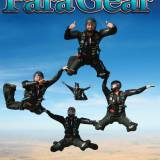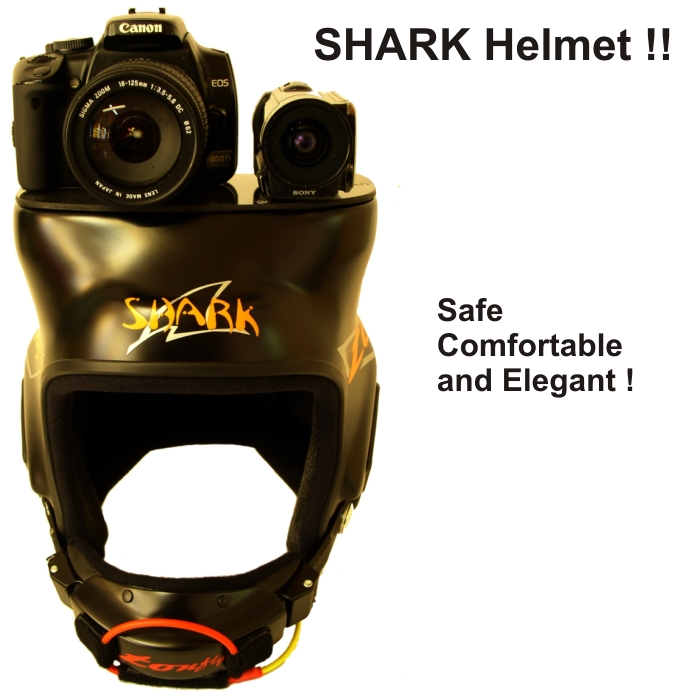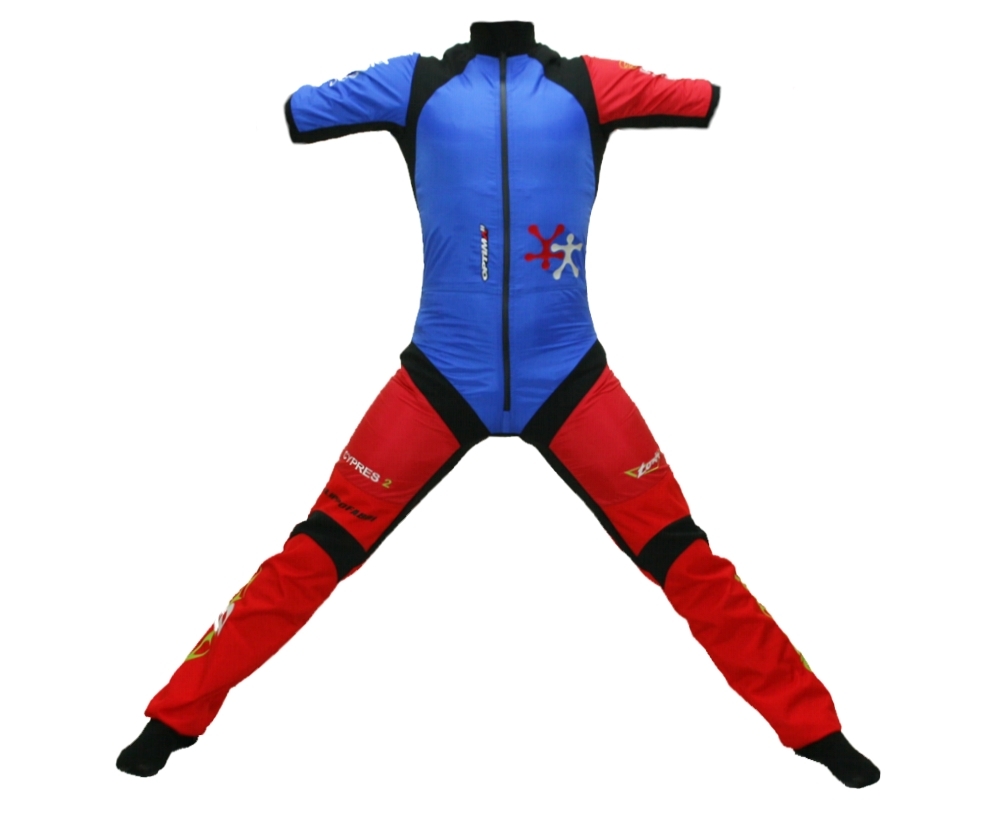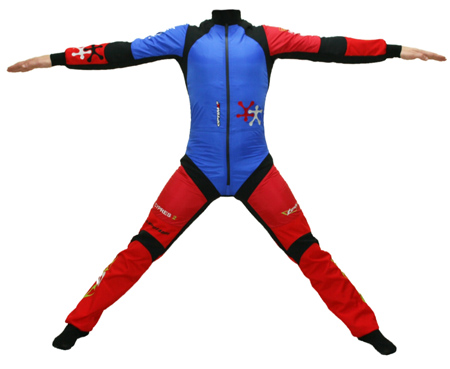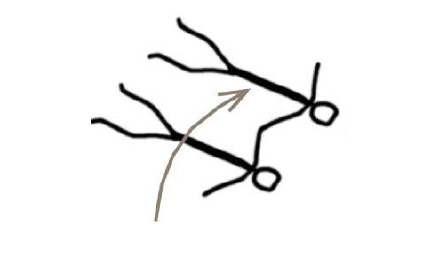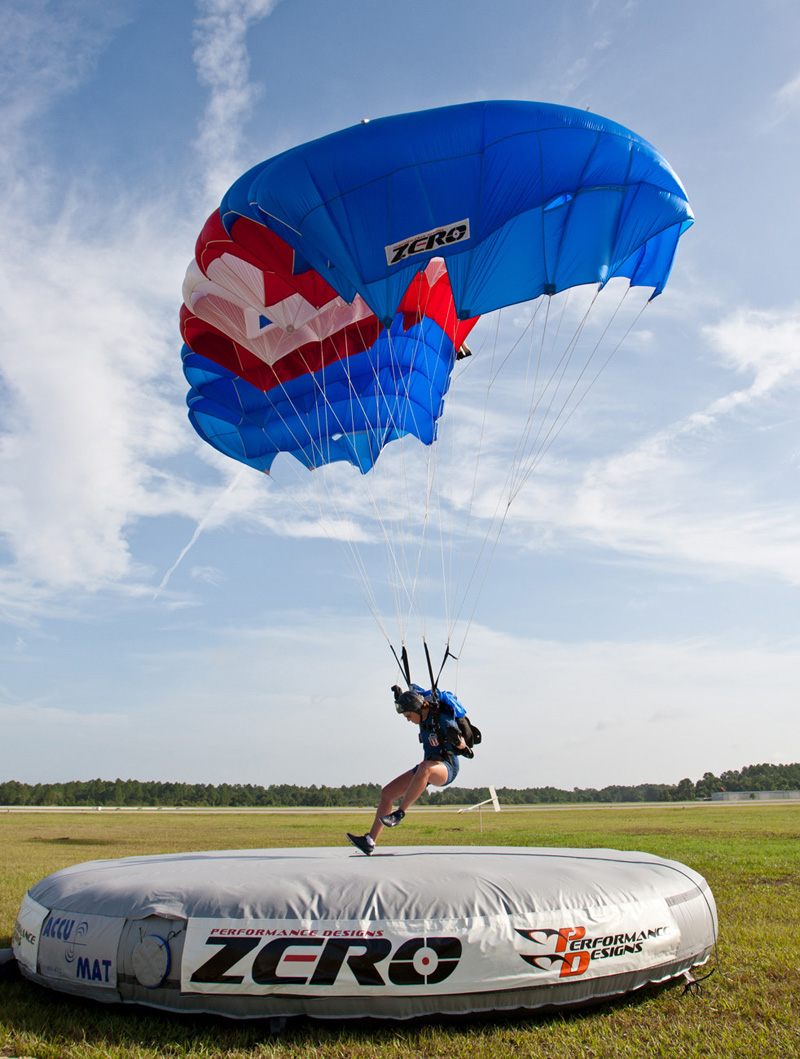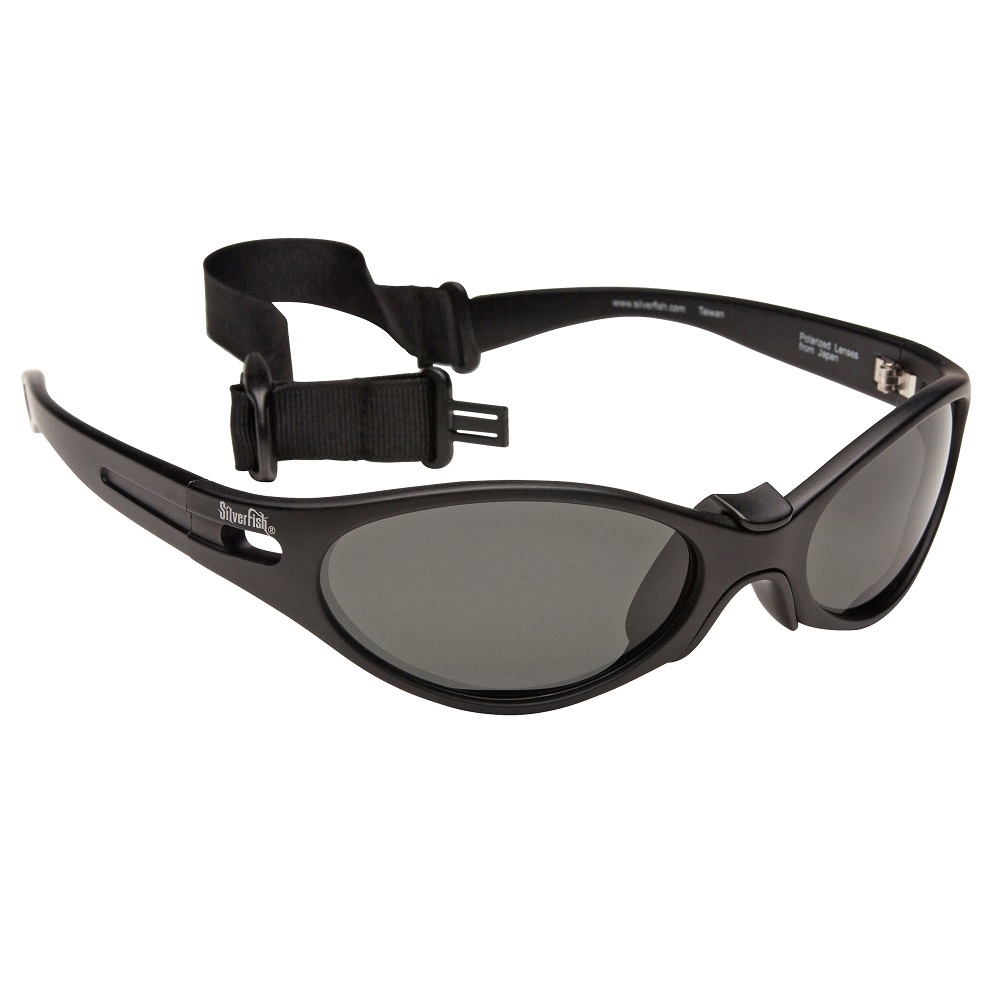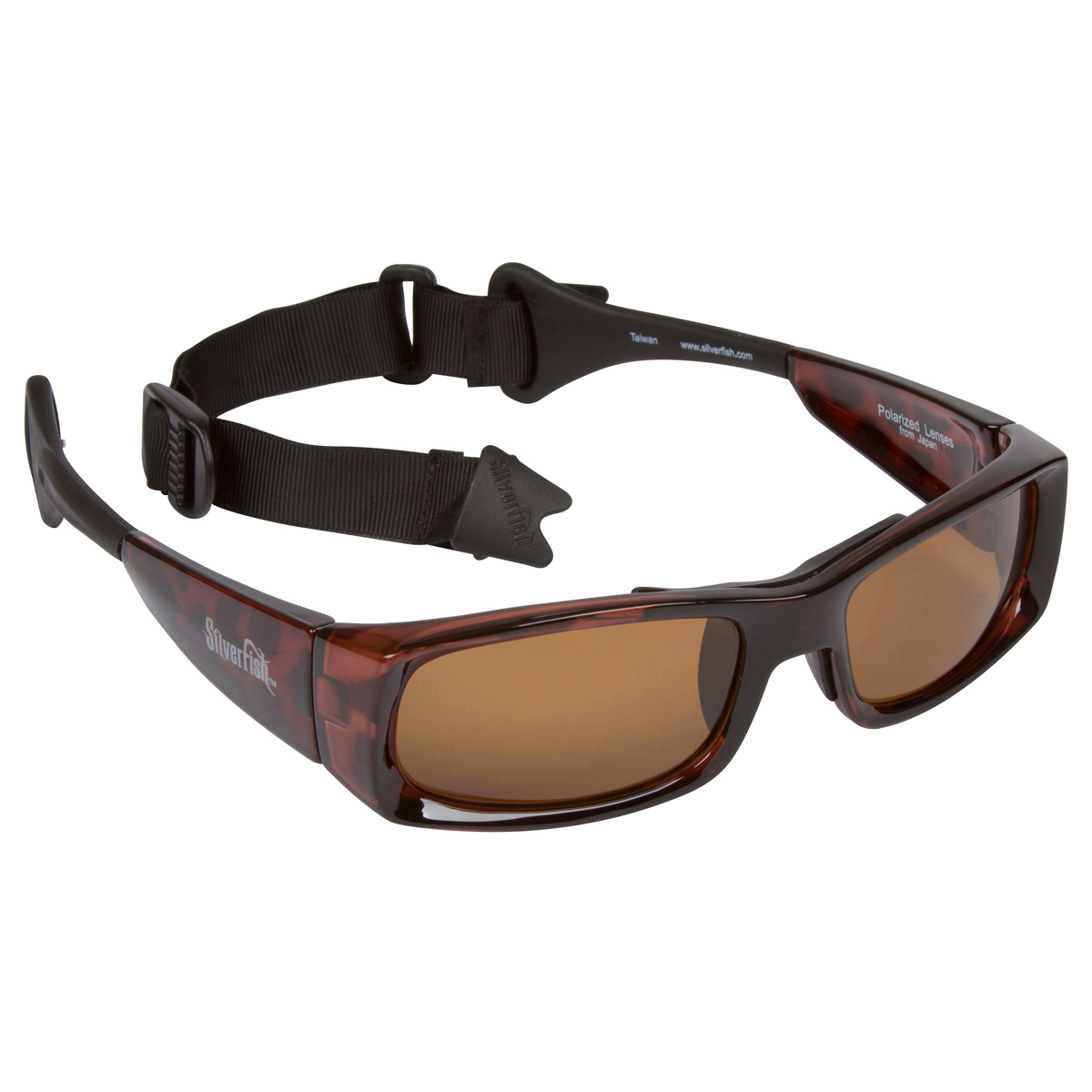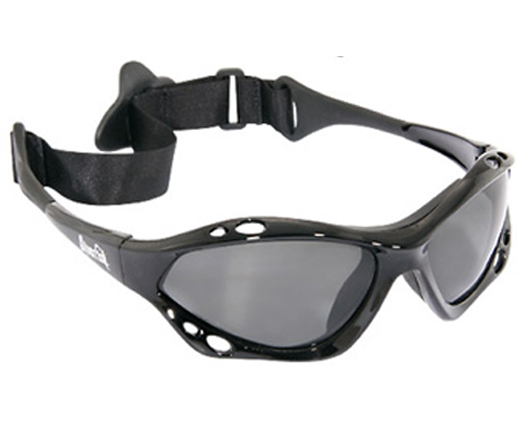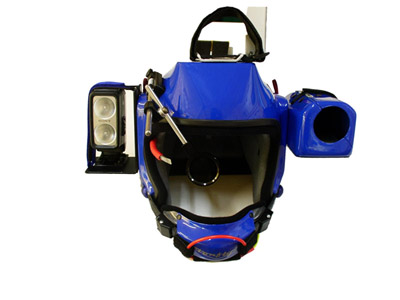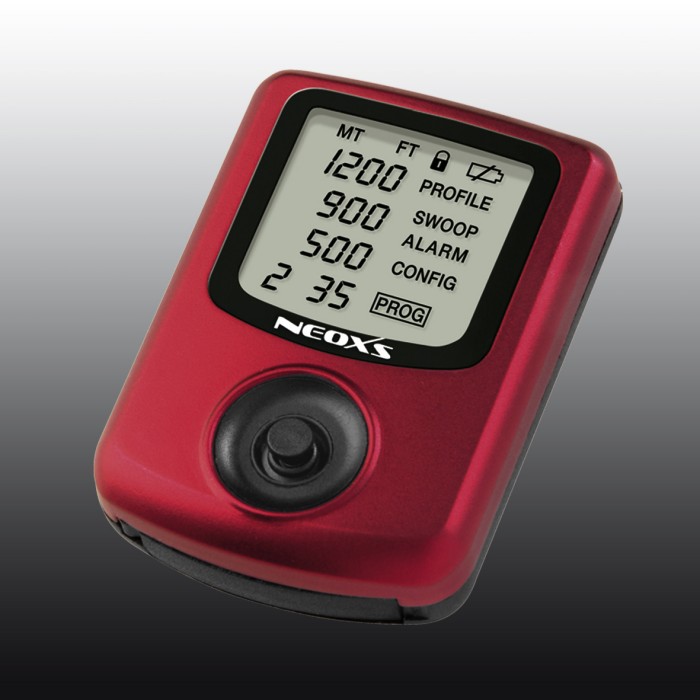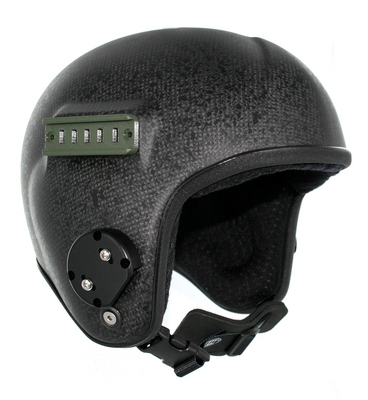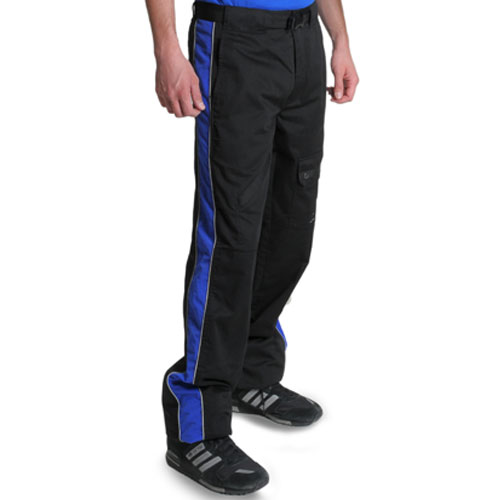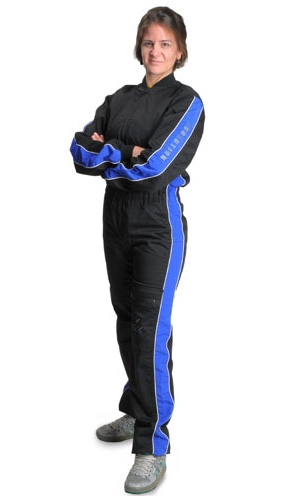-
Content
-14 -
Joined
-
Last visited
-
Days Won
1 -
Feedback
0%
Content Type
Profiles
Forums
Calendar
Dropzones
Gear
Articles
Fatalities
Stolen
Indoor
Help
Downloads
Gallery
Blogs
Store
Videos
Classifieds
Everything posted by admin
-
When we first posted that we were launching a live online canopy course, the beginning of many online adventure safety courses, a number of people asked me if I was joking. In the adventure community, actions have always spoken louder than words, and the internet is for surfing entertaining videos, not training. Although I fully understand the irreplaceable value of on-site instruction, there is a lot of work to do in a short time to get it done. People are dying out there. USPA has wisely issued a mandate to help promote participation in canopy courses in order to expedite the proliferation of the information that saves lives. This is a wonderful step, however the limited number of highly skilled canopy flight teachers causes a bottle-neck of resources. We need the information to get out there faster than we have the ability to spread it. Hence we find ourselves in the place that inspires innovation like no other, need. Live online “e-learning” programs have been fully embraced by the corporate world in recent years, and increasingly by universities and colleges as well. The choice to go with these high tech teaching systems has been partly financial, as it is far cheaper to implement than in-person training in the long run. It is also far greener because instructors no longer need to travel as much to accomplish the same goals. Lastly, corporations and learning institutions all over the world have chosen to use the internet for education because of the vastly increased scope of potential students, as distance can be taken out of the equation. These compelling reasons have caused significant advancement in the technology that makes remote teaching possible, and huge breakthroughs have been made which allow interactions to be surprisingly natural. Further, online testing can be utilized to allow instructors to get a feel for how well they are conveying the information, and what they need to focus on in the next sessions. The implementation of this new model of instruction is still very much in its infancy, however we are already finding that this futuristic method of information proliferation actually has several benefits over in-person training. When you take a canopy flight course, for instance, you cannot control the weather. In most cases, the instructor is flown in from far away and is only on site for one weekend. If the weather does not cooperate, you are in for an all-theory course. With online courses, we are able to teach the group over the course of a month. Chances are, the students will get the opportunity to jump in that time to practice what they have learned, and even get someone to video their landings to upload for the next course. Even if the participants do not get to jump, the longer duration of the course allows for deeper information association and transfer to long-term memory, as well as giving the students the opportunity to formulate better questions to help them get exactly what they want out of the experience. If they don’t remember something from the class, they can even log onto the website and watch the course all over again. This is not possible in the traditional instruction paradigm. Some will say, “But there is no substitute for being able to ask questions of your instructor in the flow of the session. The new live online training systems allow participants to “raise their hand”, so-to-speak, and get the answer they need when they need it. If the students have a webcam as well, the interaction between the student and teacher is nearly as intimate as an in person discussion once the participants grow accustom to the new medium. For some people, this online format actually allows them to come out of their shells a bit more since they are not actually in a room full of strangers. There is no doubt that on-site, hands-on instruction will remain the backbone of all adventure training. There is a great deal that can only happen in a purely organic environment, which is why people like me will continue to pound the pavement and travel to a new dropzone almost every weekend. It is essential. However, the vast majority of skydivers do not have access to such camps but once or twice per year, and by then many of them will have already gotten hurt or even killed. If we are to truly strive to improve the safety of our sport in every way possible, embracing eLearning is an indispensable step toward getting the information out there in a reasonable time frame. The internet transcends time and space like nothing else known to mankind, and if we are serious about safety, than we must cast aside our reservations, and like the first pilots of ram-air canopies, we must give it a whirl. The fear of change is understandable. When we change, we risk things getting worse. However, if we do not try to improve and evolve, in the context of a changing environment, we are essentially moving backwards. The technology passed down to us from wartime allowed our sport to come into existence, and now the corporate world, sometimes equally sinister, has created a technology that will allow great students to connect to great teachers, anywhere in the world. The precious information that was once held by only a few mentors with a limited number of weekends in the year can now be disseminated at an exponential rate, and the possibilities for improvement of our sport and other adventure pursuits are endless. This is a truly incredible time. So when someone asks me if adventure training through eLearning is a joke, I have to ask them to consider the possibility that any initial resistance to change is merely the inertia of habit and a little bit of fear. The future is being born right now in the present, and all we need to do to move forward into the vast potential of this new era of instruction is an open mind and a sense of adventure. Brian Germain is a parachute designer and test pilot, and runs canopy flight skills and safety courses all over the world. Brian has made over 14,000 jumps in his 25 years in the sport. He is also the host of the “Safety First” segment on SkydiveRadio.com, and the creator of many educational videos. Brian is the author of the widely popular canopy flight text The Parachute and its Pilot, as well as Transcending Fear, Greenlight Your Life, and Vertical Journey. His websites are www.BIGAIRSportZ.com , www.Transcendingfear.com and his online training programs can be found at www.AdventureWisdom.com. Brians highly aclaimed YouTube channel is: www.youtube.com/bsgermain
- 1 comment
- 1
-
- learn to skydive
- general safety
-
See more
Tagged with:
-
Both competitors participate exclusively in the orientation of 'Fronmonaut" and "Backmonaut". Make-up of the 5 manches: Manche 1 : 3 [Free] Manche 2 : 2 [Free] + 1 [Block] Manche 3 : 1 [Free] + 2 [Block] Manche 4 : 3 [Free] Manche 5 : 2 [Free] + 1 [Block] For every manches there will be a draw of the individual moves for the respective and eventual sequence.
-
Both competitors participate exclusively in the orientation of "Frontmonaut" and "Backmonaut". Make-up of the 5 manches: Manche 1 : 3 [Free] Manche 2 : 2 [Free] + 1 [Block] Manche 3 : 3 [Free] + 2 [Block] Manche 4 : 3 [Free] Manche 5 : 3 [Free] + 1 [Block] For every manches there will be a draw of the individual moves for the respective and eventual sequence. Moves for the category Advanced
-
IntermediateBoth competitors participate exclusively in the orientation of Frontmonaut. Make-up of the 5 manches: Manche 1 : 3 [Free] Manche 2 : 3 [Free] Manche 3 : 2 [Free] + 1 [Block] Manche 4 : 3 [Free] Manche 5 : 2 [Free] + 1 [Block] For every manches there will be a draw of the individual moves for the respective and eventual sequence. Moves for the Category Intermediate
-
-
The FREEFLY SUIT PERFECT for everyone. Gives you a large range of speed and it's easy to fly in all body positions. The top is like a UNO.618S with short sleeves but the legs and ankles have a "classical cut" . Manufactured with the same high quality fabrics as the UNO.618 and UNO.620 Suits : Schoeller windproof elastic, speed ripstop and cordura.
-
The FREEFLY SUIT PERFECT for everyone. Gives you a large range of speed and it's easy to fly in all body positions. The top is like a UNO.618 but the legs and ankles have a "classical cut" . Manufactured with the same high quality fabrics as the UNO.618 and UNO.620 Suits : Schoeller windproof elastic, speed ripstop and cordura
-
1. AUTHORITYThe competition will be conducted under the authority granted by the Atmonauti Committee of the Sports Skydivers Association. All participants accept these rules and regulations as binding by registering as a competitor for the competition. 2. DEFINITIONS2.1 Atmonauti Body Position Atmonauti is the term given to the technique that intentionally utilises the torso (as an aerofoil) to generate lift, while ‘diving’ at an angle of between 30deg – 75deg to generate relative wind required for lift. Use of the torso to achieve lift allows freedom of limbs to achieve a range of handgrips and foot docks, essential for the ARW2 and SFIDA competition formats. 2.2 Atmonauti Relative Work 2.2.1 Sequences and Blocks, including transitions and inters, to include Frontmonauti, Backmonauti and Footmonauti positions. 2.2.1.1 Frontmonauti: Head first into relative wind, torso to earth 2.2.1.2 Backmonauti: Head first into relative wind, back to earth 2.2.1.3 Footmonauti: Feet first into relative wind, back to earth 2.3 SFIDA “Challenge” Neutral Navigator sets direction, angle and speed, Competitors compete side by side of the Navigator and aim to score highest points for that jump by virtue of preset docks and grips, to include transitions. 2.4 Team An Atmonauti Relative Work Team will consist of two (2) competitors and a videographer. For SFIDA no team will exist and two (2) competitors will compete against each other navigated by an appointed qualified navigator. The Videographer will be independent from the competitors. Grip and docks 2.4.1 Grip: a recognisable stationary contact of the hand or hands of one competitor on a specified part of the body or harness of the other competitor, executed in a controlled manner. 2.4.2 Dock: A recognisable stationary contact of the foot or feet of the one competitor on a specified part of the body or harness of the other competitor, executed in a controlled manner. 2.5 Heading The direction in which the “leading edge” of the performer faces. further defined in terms of Backmonauti and Frontmonauti positions 2.6 Leading edge A specific body part of the performer (either head or feet) which is the first point of contact with the relative wind generated from the angle of attack 2.6.1 Frontmonauti: Head first into relative wind, torso to earth 2.6.2 Backmonauti: Head first into relative wind, back to earth 2.6.3 Footmonauti: Feet first into relative wind, back to earth 2.7 Axis 2.7.1 3 axis – F (flight direction), P (Perpendicular to F) & H (Horizontal) 2.8 Atmonauti position Objective is to achieve head-on relative wind (or a custom “tube”) at an angle of between 30deg – 75deg to the ground, with horizontal movement in relation to the ground, whilst searching for lift with the torso - freeing up the limbs to achieve hand grips and foot docks. 2.9 Move A change in body position, and/or a rotation around one or more of the three body axes or a static pose. 2.10 Navigator Neutral Navigator responsible for setting direction, angle and speed. No eye contact or assistance should be present. 2.11 No Fly Zone Frontmonauti<.p> Behind, below, and not on head level during the approach (i.e. must be above, ahead and on head level). 2.12 No Fly Zone Backmonauti Ahead, above, and not on head level during the approach (i.e. must be below, behind and on head level). 2.13 Head level The level of the approaches - utilising the head as reference in relation to the angle of attack set by Navigator. 2.14 Total Separation Is when all competitors show at one point in time that they have released all their grips and no part of their arms or body have contact with another body. 2.15 Inter Is an intermediate requirement within a block sequence which must be performed as depicted in the dive pool. 2.16 Sequence Is a series of random formations/free moves and block sequences which are designated to be performed on a specific jump. 2.17 Scoring move/formation Is a move which is correctly completed and clearly presented either as a free move or within a block sequence as depicted in the dive pool, and which, apart from the first move after exit, must be preceded by a correctly completed and clearly presented total separation or inter, as appropriate 2.18 Infringement2.18.1 An incorrect or incomplete formation which is followed within working time by either 2.18.1.1 Total separation or, 2.18.1.2 An inter, whether correct or not. 2.18.2 A correctly completed formation preceded by an incorrect inter or incorrect total separation 2.18.3 A formation, inter, or total separation not clearly presented 2.18.4 In SFIDA, where one or both competitors cause instability to the navigator, adversely affecting the other competitor on the same jump. 2.19 Omission 2.19.1 A formation or inter missing from the draw sequence 2.19.2 No clear intent to build the correct formation or inter is seen and another formation or inter is presented and there is an advantage to the team resulting from the substitution. 2.20 Working Time Is the period of time during which teams are scored on a jump which starts the first moment and competitor (other than the videographer) separates from the aircraft, as determined by the Judges and terminates a number of seconds later as specified in chapter 3. 2.21 NV Moves, inters, or total separations not visible on screen due to meteorological conditions, or factors relating to the videographer's freefall video equipment that cannot be controlled. 2.22 Rounds Minimum 1 round to call the meet. 2.23 Backmonauti The performer will be on heading flying on his back with his back towards the earth. 2.24 Frontmonauti The performer will be on heading flying at the defined angle as per atmonauti definition with his back towards the sky. 2.25 Footmonauti The performer will be on heading feet-first flying at the defined angle as per atmonauti definition with his back towards the ground. 2.26 Formation A record attempt formation is considered as built when two or more competitors fly on heading with a predefined dock or grip held for minimum 3 seconds, and is the basis for the Atmonauti Linked National/World Records. A free move formation, however, is merely a recognisable stationary contact of the hand/hands or foot/feet – and does not require to be held for 3 seconds as per record attempts. 3. ROUTINES3.1 The discipline is comprised of SFIDA and Atmonauti Relative Work. 3.2 Number of rounds: a. SFIDA: a total of 4 competition rounds will be completed with a minimum of one round to be completed before a meet can be called. b. ARW: a total of 5 competition rounds will be completed with a minimum of one round to be completed before a meet can be called. 3.3 All SFIDA competitions will be judged by an elimination process where the two highest scoring competitors in any given round will compete against each other in the following round and the second and third ranking competitors will compete against each other and so forth. 3.4 In the case of a tie for a specific round, the previous total points are added to identify the highest total average per competitor. 3.5 Should a tie persist, a one jump tie breaker will be performed with the highest scoring competitor moving to the next round. 3.6 A tie breaker may also be required for placing 1st, 2nd, 3rd. 4. THE EVENTS4.1 The discipline will be comprised of the following events: 4.1.1 ARW Events: Exit altitude is 11 000 feet AGL; working time is 40 seconds. 4.1.2 SFIDA Events: Exit altitude is 11 000 feet AGL; working time is 40 seconds. 4.1.3 For meteorological reasons only, and with the consent of both the Event and Chief Judge, the Meet Director might change the exit altitude and/or working time and continue the competition. In this case the following conditions will apply: 4.1.3.1 The working time will be: a. 20 or 40 seconds for the ARW Events b. 20 or 40 seconds for the SFIDA Events. The reduced working time must be used if the exit altitude is lowered (ref 4.1.1 and 4.1.2). The next round must commence if working time is changed and all competitors will be scored on the same working time for a specific round. 4.1.3.2 The minimum exit altitude will be: a. 7 000 feet AGL for the ARW Events b. 7 000 feet AGL for the SFIDA Events. The maximum exit altitude will be 13 000 feet AGL for all events. 4.2 Objective of the Event 4.2.1 The objective of the event is for the a team (ARW) or single competitor (SFIDA) to complete as many scoring moves as possible within the given working time, while correctly following the sequence for the specific round. 4.2.2 The accumulated total of all rounds completed is used to determine the placing of teams for ARW and the process of elimination as defined in chapter 3 is applied to determine the placing of individual SFIDA competitors. 4.2.2.1 For ARW if two or more teams have equal scores the following order of procedures will be applied: 4.2.2.1.1 For determining final standings: a. the highest score in any completed round; b. the highest score starting with the last completed round and continuing in reverse order, round by round until the tie is broken, c. the fastest time (measured to hundredths of a second) to the last common scoring move in the last completed round. d. one tie break round if possible (for the first three placings only). 4.3 Performance Requirements 4.3.1 Each round consists of a sequence of formations depicted in the dive pools of the appropriate annexes, as determined by the draw.4.3.2 It is the responsibility of the team or individual competitor to clearly present the start of working time, correct scoring moves, inters and total separation to the judges. 4.3.3 Scoring moves need not to be perfectly symmetrical, but they must be performed in a controlled manner. Mirror images of moves and whole block sequences are not permitted. 4.3.4 In sequences, total separation is required between block sequences, between free or random moves, and between block sequences and free moves. 4.3.5 Where degrees are shown (180, 270, 360, 540) this indicates the approximate degrees and direction of turn required to complete the inter as intended. The degrees shown are approximately that amount of the circumference of the subgroup's centre point to be presented to the centre point(s) of the other subgroup(s). For judging purposes, the approximate degrees and direction of turn of subgroups centrepoints will be assessed using only the two dimensional video evidence as presented. 4.3.6 Contact or grips are allowed between subgroups during execution of the inter. 4.3.7 Where subgroups are shown, they must remain intact as a subgroup with only the depicted grips. 4.3.8 Assisting handholds on other jumpers or their equipment within a subgroup/competitor or a scoring formation are permitted. 5. GENERAL RULES5.1 Teams may consist of competitors of either or both sexes, except in the female event where (except for the videographer) all competitors must be female. 5.2 The Draw 5.2.1 The draw of the sequences will be supervised by the Chief Judge. Teams will be given not less than two hours knowledge of the results of the draw before the competition starts. 5.2.2 Event Draws: All the «Block sequences» (numerically numbered) and the «Free moves» (alphabetically marked) shown in the appropriate annex will be singularly placed in one container. Individual withdrawal from the container, (without replacement) will determine the sequences to be jumped in each round. Each round will be drawn so as to consist of three or four scoring formations, whichever number is reached first. Alternatively this draw can be done on a Recognised electronic scoring/judging system as approved by the Meet Director and Chief Judge. 5.2.3 Use of Dive Pool: Each block or formation will be drawn only once for the scheduled rounds of each competition. In the event that additional rounds are necessary, due to the tie-breaking jump-off, the dive pool for this round will consist of the blocks and free moves which were not drawn for the scheduled rounds. In the event that all of the remaining blocks and formations do not complete the tie breaking round, the draw will continue from an entire original dive pool in that event, excluding any blocks or formations which have already been drawn for that round. 5.3 Competitors are not allowed to use a wind tunnel (freefall simulator) after the draw has been made. 5.4 Jump Order 5.4.1 Determined by a draw. 5.4.2 Should conditions or availability not allow for Jump Order to be executed as per draw, Competitors ready and present shall be given first option to continue with the rounds. 5.5 Video Transmission and Recording 5.5.1 Each team shall provide the video evidence required to judge each round. Each freefall Videographer must use the video transmission system if provided by the Organiser. 5.5.2 For the purpose of these rules, «freefall video equipment» shall consist of the complete video system(s) used to record the video evidence of the team’s freefall performance, including the camera(s), video media, tape recorder(s), and battery(ies). All freefall video equipment must be able to deliver a PAL digital signal through an IEEE 1395 compatible connection (Firewire) or composite video compatible connection. 5.5.3 As soon as possible after each jump is completed, the freefall videographer must deliver the freefall video equipment (including the tape(s) used to record that jump) for dubbing at the designated dubbing station. 5.5.4 Only one video recording will be dubbed and judged. Secondary video recordings may only be used in NV situations. 5.5.5 The dubbing station will be as close to the landing area as possible. 5.5.6 A Video Controller will be appointed by the Chief Judge prior to the start of the Judges’ Conference. The Video Controller may inspect a team’s freefall video equipment to verify that it meets the performance requirements as determined by him/her. Inspections may be made at any time during the competition which do not interfere with a team’s performance, as determined by the Event Judge. If any freefall video equipment does not meet the performance requirements as determined by the Video Controller, this equipment will be deemed to be unusable for the competition. 5.5.7 A Video Review Panel will be established prior to the start of the official training jumps, consisting of the Chief Judge, the President of the Jury, and the Chairman, or acting Chairman, of the Atmonauti SSA Committee. Decisions rendered by the Video Review Panel shall be final and shall not be subject to protest or review by the Jury. 5.5.8 If the Video Review Panel determines that the freefall video equipment has been deliberately tampered with, the team will receive no points for all competition rounds involved with this tampering. 5.6 Exit Procedure 5.6.1 Exit first (prior to FS, AE, Wingsuiting on the same jump run) at altitude. There are no limitations on the exit other than those imposed by the JM for safety reasons. 5.6.2 The exit will be controlled by the Navigator in SFIDA and Team Principle in ARW2. Exit commands will be made using an appropriate signal system, and should be discussed prior to boarding with the pilot. 5.6.3 Atmo groups will be required to fly minimum 45 degrees off jump run in order to create horizontal separation to freefall groups exiting after atmonauti group. 5.7 Scoring 5.7.1 A team will score one point for each scoring move performed in the sequence within the allotted Working Time of each round. Teams may continue scoring by continually repeating the sequence. 5.7.2 For each omission two points will be deducted. If both the inter and the second move in a block sequence are omitted, this will be considered as only one omission. 5.7.3 If an infringement in the scoring move of a block sequence is carried into the inter (ref. 2.8), this will be considered as one infringement only, provided that the intent of the inter requirements for the next formation is clearly presented and no other infringement occurs in the inter. 5.7.4 The minimum score for any round is zero points, except where zero points have been awarded and penalty/ies imposed. 5.8 Rejumps 5.8.1 In a NV situation, the video evidence will be considered insufficient for judging purposes, and the Video Review Panel will assess the conditions and circumstances surrounding that occurrence. In this case a rejump will be given unless the Video Review Panel determines that there has been an intentional abuse of the rules by the team, in which case no rejump will be granted and the team’s score for that jump will be zero. 5.8.2 Contact or other means of interference between competitors in a team and/or their Videographer shall not be grounds for the team to request a rejump with regards to ARW. In the case of the SFIDA category adverse whether conditions such as bad visibility (in cloud), any contact or other means of interference between the navigator and competitiors and/or between the Videographer shall be grounds for the individual competitors to request a rejump – granted at the sole discretion of the Atmonauti Event Judge. 5.8.3 Adverse weather conditions during a jump are no grounds for protest. However, a rejump may be granted due to adverse weather conditions, at the discretion of the Chief Judge. 5.8.4 Problems with a competitor’s equipment (excluding freefall video equipment) shall not be grounds for the team to request a rejump. 5.9 Training Jumps 5.9.1 Each team in each event will be given the option of one official training jump before the draw is made. 5.9.2 The aircraft type and configuration, plus the judging and scoring systems to be used in the competition will be used for the official training jump. 5.9.3 Two sequences will be created by the Chief Judge. Only teams performing one of these sequences will receive an evaluation and posted score. 6. JUDGING 6.1 The official training jump and competition jumps will be judged as the Videographer provides the video evidence. The Chief Judge may modify this procedure with the consent of the FAI Controller. 6.2 The judging will, as far as practical circumstances allow (landings out, rejumps etc), be judged in the reverse order of placing. 6.3 Three Judges must evaluate each team’s performance. 6.4 The Judges will watch the video evidence of each jump to a maximum of three times at normal speed. If, after the viewings are completed, and within fifteen seconds of the knowledge of the result, the Chief Judge, Event Judge or any Judge on the panel considers that an absolutely incorrect assessment has occurred, the Chief Judge or Event Judge will direct that only that part(s) of the jump in question be reviewed. If the review results in a unanimous decision by the Judges on the part(s) of the performance in question, the score for the jump will be adjusted accordingly. Only one review is permitted for each jump. 6.5 The Judges will use the electronic scoring system to record their evaluation of the performance. At the end of working time, freeze frame will be applied on each viewing, based on the timing taken from the first viewing only. The Judges may correct their evaluation record after the jump has been judged. Corrections to the evaluation record can only be made before the Chief Judge signs the score sheet. All individual Judge’s evaluation will be published. 6.6 A majority of Judges must agree in the evaluation in order to; • credit the scoring move, or • assign an omission, or • determine an NV situation. 6.7 The chronometer will be operated by the Judges or by a person(s) appointed by the Chief Judge, and will be started as determined in 2.13. If Judges cannot determine the start of the working time, the following procedure will be followed. Working time will start as the videographer separates from the aircraft and a penalty equal to 20% (rounded down) of the score for that jump will be deducted from the score for that jump. 7. RULES SPECIFIC TO THE COMPETITION 7.1 Title of the Competition: Atmonauti National/World/Continental Championships 7.2 Aims of Atmonauti National/World/Continental Championships 7.2.1 To determine National/World/Continental Champions of Atmonauti in the: • ARW (Atmo Relative Work), • SFIDA “Challenge” 7.2.2 and • To determine the world standings of the competing teams, • To establish Atmonauti formation/distance/other world records, • To promote and develop Atmonauti, • To present a visually attractive image of the competition jumps and standings (scores) for competitors, spectators and media, • To exchange ideas, experience, knowledge and information, and strengthen friendly relations between the sport parachutists, judges, and support personnel of all nations, • To improve judging methods and practices. 7.3 Composition of Delegations: 7.3.1 Each delegation may be comprised of: • One (1) Head of Delegation, • One (1) Team Manager, • Freefall videographers as.7.3.4 and 7.3.2 At a World/Continental Championship: • Two (2) ARW2 teams consisting of up to: Six (6) ARW2 Competitors • One (1) female ARW2 team consisting of up to: Three (3) female ARW2 Competitors • SFIDA contestants consisting of up to: Three (3) Individual Competitors 7.3.3 At a World Cup: • Any number of teams per event (composed as for a World Championship) to be decided by the Organiser and announced in the bulletins. 7.3.4 Videographers must be entered for each team as part of the delegation and must be a member of the Delegation’s NAC. A Videographer may be replaced at any time during the competition, (with the agreement of the FAI Controller). The evaluation process for the video evidence will be the same for any Videographer. Videographers may be one of the following: a. One person in addition to the team composition in 7.3.2. This competitor is to be considered as a team member for the purposes of awards and medals. b. Any other person (ref 7.3.6). This Videographer is eligible to receive awards and medals. This Videographer may jump as a ‘pool’ Videographer and is subject to the same regulations as other competitors on the team. 7.3.5 If any ARW team consists of competitors from the SFIDA, they should be listed separately on the entry form. 7.3.6 Any ARW competitor can only enter in one ARW team as ‘performer’ but may enter as a ‘pool’ Videographer. A competitor in the ARW event cannot also enter in the Female ARW event. 7.4 Program of Events for SFIDA: 7.4.1 The World Championships is comprised of: • Up to 8 rounds considered as selection rounds, and • Final rounds, consisting of 4 quarter finals, two semi finals, one runners up and one finals round. 7.4.2 Time must be reserved before the end of competition to allow for the completion of the semi-final, final and runners up round. 7.4.2.1. The quarter-final rounds will consist of the individuals with the 8 highest scores from the selection rounds. 7.4.2.2. The semi final rounds will consist of the individuals with the 4 highest scores from the quarter-finals. 7.4.2.3. The finals round will consist of the individuals with the 2 highest scores from the semi final rounds. 7.4.2.4. The runners up round will consist of the lowest scores of each of the 2 semi finals rounds. 7.4.3 A selection round left incomplete must be completed as soon as possible, but after the round in progress has been completed. 7.4.4 If all the selection rounds are not completed at the starting time of the quarter-finals, the round in progress will become the semi final or final round as appropriate. Where this is the semi final, the next drawn round will be used for the final round. The following procedures will apply i) The round in progress will be completed if ten or less (in the case of semi finals) or six or less (in the case of finals) teams remain to jump. All scores for this round will count. ii) The round in progress will be performed by only the ten (in the case of semi finals) or six (in the case of finals) highest placed teams if more than ten (in the case of semi finals) or six (in the case of finals) teams remain to jump. The scores of any other teams in this round will be discarded. 7.4.5 The competition will be organised during a maximum time frame of 5 competition days. Exceptions may be made where a bid is received for multiple FCE competitions at one time. 7.5 Medals and Diplomas are awarded as follows: • All team members (ARW) and individuals (SFIDA) in the events will be awarded medals if placed First, Second or Third. • Certificates are awarded to all competitors that are placed First to Tenth. 8. DEFINITIONS OF SYMBOLS 8.1 Coding in the Dive Pool annexes is as follows: 8.1.1 Indicates Move by the competitor: See image 1 top right. 8.1.2 Indicates transition on “defined’ axis by competitor in either direction: See image 2 top right. 8.2 Visualisation for dock/grip positions, (Ref: 2.5) See image 3 top right. See image 4 top right.
-
CONTENTS1. GENERAL 1.1 THE CATEGORY TESTS ARE DESIGNED FOR 1.2 ATMONAUTI COACHES 1.3 TEACHING FORMAT 1.4 COACHING CRITERIA & LAYOUT OF INSTRUCTIONAL COURSE >2. EQUIPMENT 2.1 CONTAINER 2.2 DEPLOYMENT SYSTEM 2.3 ALTIMETERS 2.4 CLOTHING 2.5 AAD (AUTOMATIC ACTIVATION DEVICE) 2.6 RESERVE HANDLES 2.7 GOGGLES 2.8 HELMET 3. PROCEDURES & RULES OF THE SKY 3.1 DEFINITIONS 3.2 GROUP LOADS 3.3 FLIGHT PATTERNS 4. CATEGORY TESTS AND REQUIREMENTS 4.1.a FRONTMONAUTI 4.1.b CATEGORY II 4.2.a BACKMONAUTI 4.2.b CATEGORY III 4.3 FLIGHT NAVIGATOR 4.4.a FOOTMONAUTI 4.4.b CAT IV 5. LICENCE REQUIREMENTS6. COACHES 1. GENERALAtmonauti, unlike traditional freefall - including tracking and flocking - (that utilises the relative gravitational wind from “below” to achieve a multitude of stable body positions at terminal velocity) is the term given to the technique that intentionally utilises lift to compensate for the effect of gravity, in order to achieve relative wind (or a custom “tube”) at an angle of between 30deg - 75deg, where after the atmonaut (atmosphere navigator) introduces a multitude of three dimensional body positions, transitions, and docks, while “falling” at greatly reduced speeds (70mph – 110mph), resulting in extended free-fall time and increased safety. Atmonauti, due to the reduced air speeds, is a social discipline, which is accessible to the masses. Atmonauti incorporates Frontmonauti, Backmonauti, Footmonauti, and Inverted Footmonauti. The Atmonauti coach is the navigator in the group jumps, is capable of coaching single jumpers and/or groups of jumpers at ground-school level specific to safety, technique, navigation, slot positioning and break-off etc. and is furthermore responsible to fly as base navigator in the formation, while communicating body position improvements and general flight path direction and break-off. It will be necessary that the coaches are involved in the management of the activity at the centres and be responsible for all activities different from vertical fall, specific to flight planning. The logical progression of skills is: 1. understanding the concept of flight vs. fall, 2. understanding the concept of no-fly zones and flying on “level”, 3. “flying” the tube (frontmonauti and backmonauti), 4. adjusting speeds, 5. adjusting levels, 6. rotating around two of the three axes, 7. transitions into the various body positions, 8. break-off direction and altitudes. As soon as a student has successfully completed ISP progression, such a student can choose to progress to Atmonauti. An Atmo ISP programme is designed to assist ISP Students who wish to progress to Atmonauti CAT II and CAT III. Jump 1 - one on one with coach Jump 2 - one on one with coach Jump 3 - one on one with coach Jump 4 - one on one with coach Jump 5 - group jumps, with maximum 2 Cat I students Jump 6 - group jumps, with maximum 2 Cat I students Jump 7 - group jumps, with maximum 2 Cat I students B licence and above may join coaching groups without the Cat II requirement. 1.1 THE CATEGORY TEST JUMPS ARE DESIGNED FORThe student who has obtained Category I status through the successful completion of the Intermediate Skills Programme. 1.2 ATMONAUTI COACHESThe Atmonauti category system is instruction based. In order for students to progress safely and without learning bad habits, it is essential that coaches actively participate. Current and competent PASA rated Atmonauti Coaches, who need not be PASA instructors, can teach it. Provided that the teaching is standardised (taken directly from the manual) the student should be able to visit any drop zone in the country and receive the same coaching and information. The holder of a current coach rating must sign off Category II, Category III and Category IV tests. CATEGORY SYSTEM COACH’S OBJECTIVES• To provide information before, during and after the skydive • To teach basic Atmonauti and further discipline skills, as laid down in this section • To teach SAFE Atmonauti flying in any one of the disciplines in a way that both the coach and student never loose sight of having fun • To communicate in the air by using “in air” signals • To teach and remedy mistakes as they happen in order that the student may carry on learning throughout the skydive • To give the student a good deal NOTE: Acknowledge if you have made a mistake – the student will appreciate an honest coach. 1.3 TEACHING FORMATBefore the jump: • Check student’s logbook - look for indication of a student’s ability. • Talk through student’s objectives - applicable to the skydive. • Talk through the jump sequence and show a video if possible. • Teach each new skill in turn - applicable to the skydive. • Discuss importance of flying minimum 45 degrees off jump run, and following the Coach/Navigator at all times. • Dirt dive the jump sequence as best as possible from exit to pull (talking the student through). • Dirt dive the jump sequence as best as possible from exit to pull (the student talking you through). • Confirm in air signals (practice these with student). • Confirm break off altitudes and direction of break-off. • Confirm emergency procedures. • Check equipment and dirt dive more. In the Aircraft: • During the climb (approximately 5000ft) ask the student to talk you through the skydive from exit to pull. • Suggest that the student mentally dirt dives periodically until run-in. • On run-in and before exit check pins and puffs. • Take student to the door and observe the spot. After the Jump: • Debrief – first the student’s version then the coach’s (dirt dive exactly what happened from exit to pull) • Corrective training – establish the student’s weak points and give corrective training. Advise the student what to practice on the next jump. • Logbook – student to fill in the logbook making comments on each part of the jump sequence. Coach must write in their recommendation for a repeat or pass on the skydive. NOTE: It is recommended that the coach jump with a camera. Video is one of the best training tools. NOTE: The next coach can obtain valuable information if the logbook has been filled in correctly. 1.4 COACHING CRITERIA & LAYOUT OF INSTRUCTIONAL COURSE1.4.1 Introduction Atmonauti is the term given to the technique that intentionally utilises the torso (as an aerofoil) to generate lift, while ‘diving’ at an angle of between 30deg – 75deg to generate relative wind required for lift. 1.4.2 Comparison Freefall vs Atmonauti/Flight (including tracking) Freefall = no lift attempted. Tracking = spilling air. ATMO = lift generated with angle + torso. 1.4.3 Concept of lift, how to use the torso as an aerofoil, including angle Discuss aerofoil, relative wind striking leading edge travelling over torso, importance of angle. 1.4.4 Round vs Square canopies (drag vs flight) • Round = Drag, no lift, freefall • Square = angle of attack to generate air speed, use of aerofoil to create lift, front/rear risers 1.4.5 Body Positions – Frontmonauti only, Backmonauti as reference • General Body Position - Chin Down, Arms Forward, hips back, retaining curvature • Control surfaces – Arms and legs to speed up and down, use of hips to change angle • Backmonauti position discussed briefly for reference only. 1.4.6 Fly Zones, flying on head level • General set up above and ahead, seeking opposite horizon • Discuss head level at angle in relation to the ground • Discuss no fly zones and reasons 1.4.7 Exit – placing in door, count, exit order, correct body position on exit 1.4.8 Flight path – 45 min deg to jump run (safety 1st) Discuss importance of flying off jump run and staying with group to avoid risk of collision, move to centre on opening i.e. after break-off return to common centre away from jump run until other canopies open. 1.4.9 Break-off and varying altitudes of break-off for groups Maintaining position in group, breaking off with angle of 45 deg between jumpers “fanning out” 1.4.10 Signals Turn left/right, speed up, increase angle, break off, other 1.4.11 Equipment including audible altimeters 1.4.12 Log book and reference to Manual of Procedures, briefing and debriefing of jump, signing of logbook, informing NSTO of category qualifications, etc. 2. EQUIPMENTEvery skydiver’s nightmare is a premature opening. Firstly, the jumper may be transitioning and become entangled; secondly, they will be going faster than the recommended canopy opening speed; potentially fast enough to hurt, seriously injure or even blow up the reserve. 2.1 CONTAINERContainers must be tight fitting and should never allow for exposure of risers, pins and most importantly the bridle and pilot chute. Exposed risers are not recommended. Ensure that all pin protection flaps and riser covers are secure as with AE container requirements. 2.2 DEPLOYMENT SYSTEMBottom of container (BOC) throwaway or a pullout deployment are vital as the pilot chute and bridle must be stowed tightly away from the airflow. NO leg strap throwaway’s allowed. Keep your closure loop tight and in good condition, inspect it for wear on a regular basis (every pack job) and check Velcro for wear. 2.3 ALTIMETERSIt is advisable for every participant to wear not only visual, but audible altimeters on all Atmonauti flights. However, it is a compulsory requirement that a minimum of 50% of the atmonauts on the same formation wear audible altimeters. 2.4 CLOTHINGIt is important that clothing does not restrict movement and that it does not cover cut-away / reserve handles 2.5 AAD (AUTOMATIC ACTIVATION DEVICE)An AAD is recommended to all those who can afford it. The potential for collisions exists. 2.6 RESERVE HANDLESEnsure that Velcro is in a good condition. One can also decide to change the metal D – handle to a puff the same as the cutaway puff. However if you prefer to jump with your alti on your palm the D – handle is the preferred option. 2.7 GOGGLESShould not limit visibility and should be securely tightened, as the varying body positions and higher speeds easily dislodge them. 2.8 HELMETA hard shell helmet (and goggles – for open face helmets) is compulsory for all Atmo skydivers excluding “D” licence holders. 3. PROCEDURES AND RULES OF THE SKY3.1 DEFINITIONSStudent refers to the person performing the test Coach refers to the coach of the test, as well as the reference point or Navigator for the student. It is the responsibility of the student to appoint a capable coach / cameraperson and confirm it with the CI. Navigator refers to the person in the sky toward whom the student or the rest of the formation is working towards, who sets angle and speed, and who’s responsibility it is to fly minimum 45 degrees off of jump run. Atmonauti Relative Work (ARW) refers to Sequences and Blocks, including transitions and inters, to include Frontmonauti, Backmonauti and Footmonauti positions. Backmonauti refers to the performer flying on heading on his back with his back towards the earth. Frontmonauti refers to the performer flying on heading on his belly with his back towards the sky. Footmonauti refers to the performer flying on heading feet-first with his back towards the ground. Break Off refers to separation in the sky prior to opening altitude. Minimum break off altitude is 4500ft AGL to allow for good separation and time to slow down. Please see 3.2 Group Loads for additional information specific to Group break off minimum requirements. Grip is a recognisable stationary contact of the hand(s) of one competitor on a specified part of the body or harness of the other competitor, executed in a controlled manner. Dock is a recognisable stationary contact of the foot (feet) of the one competitor on a specified part of the body or harness of the other competitor, executed in a controlled manner. Atmonauti position: objective is to achieve head-on relative wind (or a custom “tube”) at an angle of between 30deg – 75deg to the ground, with horizontal movement in relation to the ground, whilst searching for lift with the torso - freeing up the limbs to achieve hand grips and foot docks. Heading refers to the direction in which the “leading edge” of the performer faces. Leading edge refers to a specific body part of the performer (either head or feet) which is the first point of contact with the relative wind generated from the angle of attack. No Fly Zone Frontmonauti: Behind, below, and not on head level during the approach No Fly Zone Backmonauti: Ahead, above, and not on head level during the approach Head level: The level of the approaches - utilising the head as reference in relation to the angel of attack set by Navigator. 3.2 GROUP LOADSGroups from 2 – 3 jumpers will break off at an altitude of 4500 feet AGL, in accordance with the break-off pattern as briefed by the coach/navigator. Groups from 4 – 7 jumpers will break off in two phases, with 4 jumpers breaking off at 5000 feet AGL and the remaining jumpers breaking off at 4500 feet AGL, in accordance with the break-off pattern as briefed by the coach/navigator. Groups from 8 – 11 jumpers will break off in three phases, with 4 jumpers breaking off at 5500 feet AGL, 4 jumpers breaking off at 5000 feet AGL, and the remaining jumpers breaking off at 4500 feet AGL, in accordance with the break-off pattern as briefed by the coach/navigator. Groups from 12 – 15 jumpers will break off in four phases, with 4 jumpers breaking off at 6000 feet AGL, 4 jumpers breaking off at 5500 feet AGL, 4 jumpers breaking off at 5000 feet AGL, and the remaining jumpers breaking off at 4500 feet AGL, in accordance with the break-off pattern as briefed by the coach/navigator. Minimum exit altitude for Atmonauti jumps is 7000 feet AGL. 3.3 FLIGHT PATTERNSFlight patterns are in accordance with aircraft exit patterns as briefed by the coach or navigator, but whereby in general it is important to note that experienced navigator groups exit first and whereby inexperienced solo jumpers/groups will exit last (excluding wingsuit jumpers), and should be discussed prior to boarding with the pilot. In general the Atmonauti groups fly at minimum 45 deg to run-in so as to fly away from, and create separation to, freefall jumpers exiting closer to the dz. In the event that more than one Atmonauti group is present on the aircraft, the first group will exit at 45 deg to right and the second group 45 deg to the left and third group 45 deg to right (as with first group) and so on. Inexperienced groups exiting last should be aware that a flight pattern of 130 deg might be required in order to avoid flying away from the recommended landing area. Attention should be paid to the direction of the preceding Atmonauti loads to avoid opening close to such preceding groups. 4 CATEGORY TESTS AND REQUIREMENTSCat I and B, C & D licence jumpers may commence a Cat II and Cat III Atmonauti progression course. One-on-one instructionals are not obligatory but highly recommended. 4.1.a Frontmonauti • have passed a theory exam on the basic Frontmonauti rules and techniques. • have passed a test that consists of performing a flight with the instructor who, during the flight, will perform changes of speed, of angle and of trajectory. • the candidate will have to demonstrate the ability to always remain at a constant distance in relation to the coach, and never be in the “no fly zones”. • have passed practice jumps that consists of being able to synchronize with the formation and remain at a constant distance, and on level with it, for the duration of the flight, while never going into the “no-fly zone”. • have shown the ability to correctly separate in frontmonauti at break off. • to execute the above test correctly on three consecutive flights. 4.1.b CAT II • have successfully passed Frontmonauti brevet/license requirements (see above). • have passed a test of exiting the aircraft 1 second after the coach, taking a stable dock from the fly-zone within 10 seconds, holding the dock for 5 seconds, releasing and crossing over the coach to the opposite side, taking a stable dock and holding the dock for 5 seconds. Once the Atmonauti CAT II is obtained, the candidate will be free to participate in large Atmonauti groups utilising the Frontmonauti body position exclusively without a recognised coach present. 4.2.a Backmonauti • have passed a theory exam on the basic Backmonauti rules and techniques. • have passed a test that consists of performing a flight with the coach who, during the flight, will perform changes of speed, of angle and of trajectory. • the candidate will have to demonstrate the ability to always remain at a constant distance in relation to the coach, and never be in the “no fly zones”. • have passed practice jumps that consists of being able to synchronize with the formation and remain at a constant distance, and on level with it, for the duration of the flight, while never going into the “no-fly zone”. • have shown the ability to correctly separate in backmonauti at break off. • to execute the above test correctly on three consecutive flights. 4.2.b CAT III • have successfully passed Backmonauti brevet/license requirements (see above). • have passed a test of exiting the aircraft 1 second prior to the coach, taking a stable dock from the fly-zone within 10 seconds, holding the dock for 5 seconds, releasing and sliding under the instructor to the opposite side, taking a stable dock and holding the dock for 5 seconds. Once the Atmonauti CAT III is obtained, the candidate will be free to participate in large Atmonauti groups utilising the Frontmonauti and Backmonauti body positions, including transitions, without a recognised coach present. 4.3 Flight NavigatorThe navigator qualification allows the navigator to navigate group Atmonauti loads of recognised Cat II and Cat III atmonauts. This qualification is not a coach qualification. • Must have a JM rating • Must pass a theory exam on Atmonauti Navigation rules and techniques. • Must exit the aircraft stable, and maintain a stable and consistent frontmonauti body position. • the candidate will have to demonstrate the ability to fly and maintain a safe and correct flight path. 4.4.a Footmonauti • have passed a theory exam on the basic Footmonauti rules and techniques. • have passed a test that consists of performing a flight with the coach who, during the flight, will perform changes of speed, angle and trajectory. • the candidate will have to demonstrate the ability to always remain at a constant distance in relation to the coach, and never be in the “no fly zones”. • have passed practice jumps that consists of being able to synchronize with the formation and remain at a constant distance, and on level with it, for the duration of the flight, while never going into the “no-fly zone”. • have shown the ability to correctly separate in footmonauti at break off. • to execute the above test correctly on three consecutive flights. 4.4.b CAT IV • have successfully passed Footmonauti brevet/license requirements (see above). • have passed a test of exiting the aircraft 1 second prior/after the coach, taking a stable footmonauti position from the fly-zone within 10 seconds, holding the position for 5 seconds. • Demonstrate the ability to transition safely (180 side transition) into backmonauti. • Demonstrate the ability to transition safely (180 side transition) from backmonauti to footmonauti Once the Atmonauti CAT IV is obtained, the candidate will be free to participate in large Atmonauti groups utilising the Frontmonauti, Backmonauti and Footmonauti body positions, including transitions. 5. LICENCE REQUIREMENTSA-Licence: As per section 2 of the MOPs. B-Licence: As per section 2 of the MOPs. CAT II & CATIII qualification in Atmonauti - signed off by a recognised Atmonauti Coach. C-Licence: As per section 2 of the MOPs. Flight Navigator and Coach qualification in Atmonauti - signed off by a recognised Atmonauti Coach. D-Licence: As per section 2 of the MOPs. CAT IV qualification in Atmonauti - signed off by a recognised Atmonauti Coach. 6. COACHESThe coach rating is designed to give a formal qualification to those who teach Atmonauti jumpers up to Cat IV level. All applicants for coach ratings must be recommended by a CI and endorsed by the Atmonauti sub committee of the SSA (see Form 19). The Atmonauti coach is the navigator on the coaching group jumps, and is capable of coaching single jumpers and/or groups of jumpers at ground-school level specific to safety, technique, navigation, slot positioning and break-off etc. The coach is qualified to fly as base navigator in Instructional Formations, while communicating body position improvements and general flight path direction. The candidate should know perfectly all the rules specific to Atmonauti, as well as general club rules, and general knowledge of the MOPs and above all he should be able to explain them in an easy and correct manner. An applicant for an Atmonauti Coach Rating must: • Have a minimum of 200 jumps? • Hold a PASA B, C or D licence? • Have successfully completed a PASA-ADZO approved Jumpmaster, Static Line Instructor, or AFF Instructor Course. • Have matured his/her experience in Atmonauti, and holds a valid Cat II and Cat III in Atmonauti. • Hold a valid Navigator qualification. • Have acquired the technique and philosophy of the Atmonauti discipline and is capable of communicating such information in a simple and understandable fashion. • Have passed an Atmonauti Coach Evaluation Test that consists of: - exiting the plane a second after the coach - performing a frontmonauti hand grip on his right within 10 seconds from the exit - flying the grip perfectly for 5 seconds - leaving the grip and passing above the coach at not more than a meter, passing to his left and performing a hand grip on the left hand of the coach - flying the grip perfectly for 5 seconds - leaving the grip and performing a transition to backmonauti - performing a grip in backmonauti on the left hand of the coach - flying it perfectly for 5 seconds - leaving the grip, while remaining in backmonauti and passing under the coach to the right side of the coach, and performing a grip on the right hand of the coach - flying the grip perfectly for 5 seconds • Have passed an oral exam on the Atmonauti technique, and have the necessary knowledge required for the instructor rating, specific to organising large formations (coaching, planning the formations, break-off etc) • Have passed an evaluation practice test that consists in organizing an Atmonauti group jump including verbal instructionals, preparation on the ground (analysis of the conditions and parameters), flight planning, briefing, and debriefing all the phases of the flight. Once having passed these tests, the candidate will receive an Atmonauti Coach Rating and can start the activity of Coach and organizer of instructional flight groups. It will be necessary that the Coaches are involved in the management of the activity at the DZ’s and be responsible for all activities different from vertical fall, specific to flight planning (flight patterns). To remain current as an Atmonauti Coach the rating holder must: • Have performed at least 50 jumps in the previous 12 months of which 25 must be Atmonauti coaching jumps. • Have performed the Atmonauti coach evaluation jump with a current Atmonauti coach, respectively changing roles to prove ability as a coach and flying skill accordingly. • Attendance of an Atmonauti sanctioned coaching seminar in the previous 12 months is highly recommended.
-
-
Our Elite series is our premium line, combining Performance, Functionality, and Style to keep the Hard Core at the top of their game! Includes a Silverlite™ Nylon Frame, Japanese, UVA/UVB polarized lenses, removable quick-release strap, leash, Snapper™ nose piece and micro fiber pouch. Eyewear for surfing, windsurfing, kitesurfing, kayaking, kiteboarding, kite surfing, kite boarding, and most water and wind sports.
-
Our newest addition, combining Performance, Functionality, and Style to keep the Hard Core at the top of their game! Includes a Silverlite™ Nylon Frame, Japanese, UVA/UVB polarized lenses, removable strap, leash, rubber nose piece and micro fiber pouch. Eyewear for motorcycling, surfing, windsurfing, kitesurfing, kayaking, kiteboarding, kite surfing, kite boarding, and most water or high wind sports.
-
Our Standard frame is perfect for the weekend warrior! Polycarbonate, Japanese, polarized, UVA/UVB lenses. Includes a Black Nylon Frame, polarized lenses, integrated strap, rubber nose piece, and micro fiber pouch. Eyewear for surfing, windsurfing, kitesurfing, kayaking, kiteboarding, kite surfing, kite boarding, and most water sports, extreme sports and high wind sports.
-
This helmet has been thought and created for professional Videomen. Built with three flat sections where are installed three TM Zkulls systems allows you a multitude of Photo-Video different connections, succeeding to satisfy any kind of Videomen requirement. The Top Mount Platform is very wide and it permits to connect any kind of video or still solution even those devices with bigger dimensions. With the Diablo Converter you can perform your professional job of Videomen without any kind of limitation. All the flat parts of Diablo are reinforced and they permit to support heavy loads. Above all that DIABLO CONVERTER 3 gives you the possibility to mount the new Photo-Video Top Bracket where with the addition of one TM Zkulls you can connect your still camera in the front of the helmet so you gain a 4 video zones configuration where connect and disconnect all your video and still devices at your pleasure.
-
We had so much fun in 2010 that we are doing it again in 2012 – except this time with much better weather! Skydive Expo will be a 6-day gear extravaganza of fun and education—seminars, manufacturers, world-class organizing, and jumping. The people who make your gear want to meet you and share all they know about their products. It’s a fun, informal event filled with education, skydiving, and skydivers. Planned EventsThe heart of the Skydive Expo is the expo itself; manufacturers from around the world will be here at low-pressure booths to answer your questions and show you their gear. Even better, you’ll be able to walk over to Skydive DeLand to test out what they show you! There will be seminars on a wide range of topics such as packing, maintenance, new gear features, and more. Organizers will be here putting together low-key, small, pick-up style jumps--no high pressure dirt diving or fear of getting cut here. Why?Gear manufacturers love going to boogies because they’re the perfect environment to answer your questions, teach you about their products, meet jumpers, and have fun. All the manufacturers wanted to get together with that low-key vibe in one place, at a world-class drop zone where you can actually jump the products you’re learning about! Who is doing this?Gear manufacturers from around the world are organizing the Skydive Expo. This isn’t an event to sell you gear (no sales are allowed at Expo, so don’t worry about being pressured to buy anything); we just want you to learn all you can about your gear. Period. The Skydive Expo is all about safety and education. In Honor of Ted Strong, D-16, April 7, 1936 - October 14, 2011Ted was one of the creators of the skydiving industry, and he strived to improve the industry that he loved without seeking fame or credit. He just wanted a safer and more inviting environment for everybody to enjoy and experience skydiving the way he did. He saw a need for education that is accessible to all sport skydivers – and what better way to do that than a jumping event where people learned about their gear. To that end, Ted helped draft the original guidelines of the Skydive Expo. We’ll honor Ted’s memory at the 2012 Skydive Expo in many ways—not least of which will be sharing safety, education, and fun with sport skydivers from around the world. So now would probably be a good time to let your boss know that you need some time off, and book your tickets to DeLand, Florida for April 3-8, 2012. Bring your gear, a thirsty mind, and be ready to have an awesome time. For more information, visit our website, www.skydiveexpo.com, or like our Facebook page, www.facebook.com/skydiveexpo.
-
It is lightweight, sturdy, accurate, reliability and accuracy in a small unit. The NeoXs is the latest in the family of audible instruments designed and built by Parasport. It is directly born from the experience of the Skytronic GFX, completing it when the GFX is used as visual altimeter installed on the wrist mount. Main features of the NeoXs include freefall signals, canopy warnings, countdown timer, real time altitude display while climbing to altitude, and the simplified programming of warning altitudes, using 4 user programmable profiles. The NeoXs has also been designed to be easy to inexperienced users too. The ergonomic Navigation Switch allows an intuitive use and an easy programming of the different altitude warnings on the ground as well as climbing to altitude. The unit has aluminium case and has a wide LCD display protected by a polycarbonate shield, being therefore highly shock resistant. It has been designed to be inserted into the inner pocket of a helmet without using any specific adapter. It's compatible with any helmet, full face or open face. Because of the small size and the 12 mm of thickness of the lightweight aluminium case, the NeoXs doesn’t affect helmet fit and comfort once inserted into the inner pocket. The NeoXs is available in 3 colors: Lava Red, Aluminium Grey, and Night Black.
-
The Versa is Bonehead composites newest helmet addressing an economical need for a versatile helmet for both military and civilian missions. Constructed of vacuum molded carbon fiber and fiberglass, this lite weight helmet packs a punch when it comes to ease of maintenance and options. It is fitted with a three peace liner secured with Velcro Fasteners and the removable liner is comprised of both open and close cell foams for comfort as well as bump protection. All liner sections can be shimmed with foam for a custom fit. The pockets in the ear pads allow for the use of communication speakers. The Versa is secured with a single point quick release chin strap and fastener. The Versa shell was designed to offer as many mission needed options as possible. Accessory pads on both the right and left side provide convenient locations to mount small cameras, flash lights, etc. Bonehead's optional accessory rails are mounted with two screws and then provide quick component removal while still maintaining a minimal snag hazard. Standard Picatinny rails can also be mounted directly to the Versa shell. Bonehead carries oxygen receivers that mount with ease as well as NVG three hole forehead mounts. The Versa fits our standard head sizes small through extra large and can be ordered in all our standard colors. Available Options: Accessory rails (requires Picatinny adapters) - $65.00 NVG forehead mount (three hole) - $85.00 Communication speakers/helmet harness - $90.00 Oxygen Receivers (adjustable) - $85.00 Replacement liners - $45.00
-
PittZ Freefly Pants are very durable and comfortable pants, built to fit average body sizes. Great for both skydiving and as regular pants! Features: - Made of 65% polyester and 35% cotton - Sewn with E-thread - Unisex design, built to fit average body sizes - Durable YKK zipper - Elastic waist - Two side pockets, same as on regular pants - Pocket on left thigh closed with zipper and buttons - Pocket on right thigh is angled for easy access - Ankle cuffs closed with double Velcro - Comes with an adjustable belt or use your own
-
PittZ Freefly Evolution is an affordable, stock jumpsuit available in six different sizes, XS to XXL.This unisex design suit is made from a comfortable polyester cotton blend. With just the right amount of drag, the Evolution is great for all experience levels. Although the suit is made for freeflying, it is suitable for intermediate belly jumping, and perfect for AFF and tandem jumpmasters who need a strong and durable suit. PittZ Freefly Evolution suits have also been successfully used by both AFF and tandem students! Features: - Made of 65% polyester and 35% cotton - Sewn with E-thread - Unisex design, built to fit average body sizes - Durable YKK zipper - Elastic waist - Inner pocket with external D-ring for pull-up cord - Pocket on left thigh closed with zipper and buttons - Pocket on right thigh is angled for easy access - Ankle cuffs closed with double Velcro - Button at the neck to prevent the zipper from opening in freefall
-
This little article is about the art and science of skilfully and quickly pulling out of a dangerously low dive. You can apply this skill to many aspects of parachute flight, but the scope of this article will hone in on keeping you above ground if you turn too low, in more ways than one. When you turn close to the ground, the likelihood of your survival has a great deal to do with suspension line tension. If you are not currently connected to your canopy, you can't pull out of a dive all that quickly. Maintaining positive "g's" requires a smooth reduction of the angle of attack when performing a turn or dive, and graceful coordinated turns throughout your approach. If you feel the parachute pulling away from you in a balanced manner, you are prepared to nose her up whenever you want to. The process of pulling out of a dive clearly has something to do with bank angle, but it has much more to do with pitch. This is the fore-aft pendulum axis, like on a swing-set. If you begin increasing your pitch as soon as you get that funny feeling, and leave the rolling out for after you feel the load increase, you will recover far sooner than if you went straight to fixing the roll problem. Fly the pitch first, then progressively reduce the roll angle when you feel heavier. In doing so, you are literally creating time to fix your problems. In short, nose her up wherever you are, and then deal with the rest of your flight. The pitch responds to a variety of inputs. A tap in the rear risers will nose you up a bit, as will releasing application of the front risers. Such inputs may even level you off to zero descent, provided that you have the altitude. Rears are, however, a terrible way to pull up from a dive executed dangerously low. When you get down and dirty, brakes simply have more bite. Knowing that different inputs have different recovery times, this leads us to the exploration of what kind of brake input moves the pitch fastest. So it turns out, a short, sharp, powerful burst-and-hold of six to twelve inches will move your pitch more, sooner and more effectively than twice the quantity of control input when applied with a slower control motion. Fast works quicker. This is what I refer to as "Power Pitching", and it is an essential skill for all canopy pilots who would like to join the ranks of the old fart club. It is all a matter of airspeed. When the angle of attack is increased swiftly, while the airspeed is still quite high, there is more effect to the direction of flight. When you are in half brakes, for example, you have a slower pitch response, and the resulting level-off is weak at best. Watch scared students land and you will get to see this principle over and over. When a canopy is traveling at high speed, on the other hand, in the first one third of the control range, the bang-for-your-buck is far higher when it comes to maneuvering capability than the lower end of the range will ever hope to offer. This is because the wing is traveling faster, and drag increases as we go faster. That is why a patient pilot who waits for the correct time to flare and then gives one smooth, decisive motion from zero brakes to quarter brakes usually ends up with a glorious level off. The top of the control stroke is the heart of your power to change the direction of flight. Consequently, if you fly smooth coordinated harness-led turns with your toggles mostly up and your tail out, your first pulse of brake application will pop you up out of a steep dive surprisingly quickly. It is true that some parachutes recover more powerfully from a dive than others due to good design, but every parachute recovers far sooner when good technique is used. There are, however, limits to every technique. There is a point when a PLF is just not enough to prevent pain, and there is such a thing as a sloppy turn thrown too low. Don't do this if you want to get old. Fly consistent patterns that work for your landing area and parachute specifics, and relax into having more fun. Most of the time this stuff is not necessary at all. Once in a while, on the other hand, the one with the most Jedi skills wins. In the end it is a calm heart combined with skilful execution that ultimately leads us to glorious recoveries and beautiful landings. As we grow into what it means to us to become a better skydiver, we reach for expansion of the diverse skill-set that will allow us to skydive with our grandchildren. Wonderfully, skill is more fun, and skill is safety. Brian Germain is a parachute designer and test pilot, and runs canopy flight skills and safety courses all over the world. Brian has made over 14,000 jumps in his 25 years in the sport. He is also the host of the “Safety First” segment on SkydiveRadio.com, and the creator of many educational You Tube videos. Brian is the author of the widely popular canopy flight text The Parachute and its Pilot, as well as Transcending Fear, Greenlight Your Life, and Vertical Journey. His websites are www.BIGAIRSportZ.com and www.Transcendingfear.com and his YouTube channel is: www.youtube.com/bsgermain
-
We received an e-mail today from Skyconcept in Germany, that they are the victim of a robbery which occurred late last month. We feel we should get this information out there and try help them in recovering their stolen property. We are hoping that someone may have information that can lead to the recovery of the stolen gear. Below is a copy of the e-mail from Skyconcept. "Dear skydivers and people, In the night of the 27/28th september someone broke into the premises of the skydiving company SKYCONCEPT from Germany at the drop zone Skydive Westerwald – Airport – Auf der Hub 4 – D-35767 Breitscheid...They have STOLEN our complete skydiving equipment. Please take a look in attachment. There you find all details about the stolen harness/containers, main canopies, reserve canopies, AADs and other skydiving equipment. If anyone in the world sees those items somewhere please contact directly Mr Sasha Manojlovic at: Mobile: +49 ( 0 )177 205 8 267 or +49 ( 0 ) 177 650 5 371 Email: sascha@my-skyconcept.de or yvonne@my-skyconcept.de If you see any piece of this equipement anywhere in the world please give us notice, all tips and notices that lead to the stolen equipment will be awarded with a value of 2000 EUR in various skydiving equipment. Please send this mail to all skydivers of the world to public our list in the best way. Thanks in advance. Sascha " In addition to this, Skyconcept have listed the stolen gear in our database, where the exact details of each item and their serial numbers can be located. http://www.dropzone.com/stolen/
-
The pants are made for comfort. Options available to make them the perfect pair of DZ pants.
-
This suit is for the free fliers who don't need a tight fitting suit (no spandex in this suit). This suit can be built for anyone but is a better fit for those who need to slow down (you know who you are). The same options are available for this as for the Slimmer suit.




